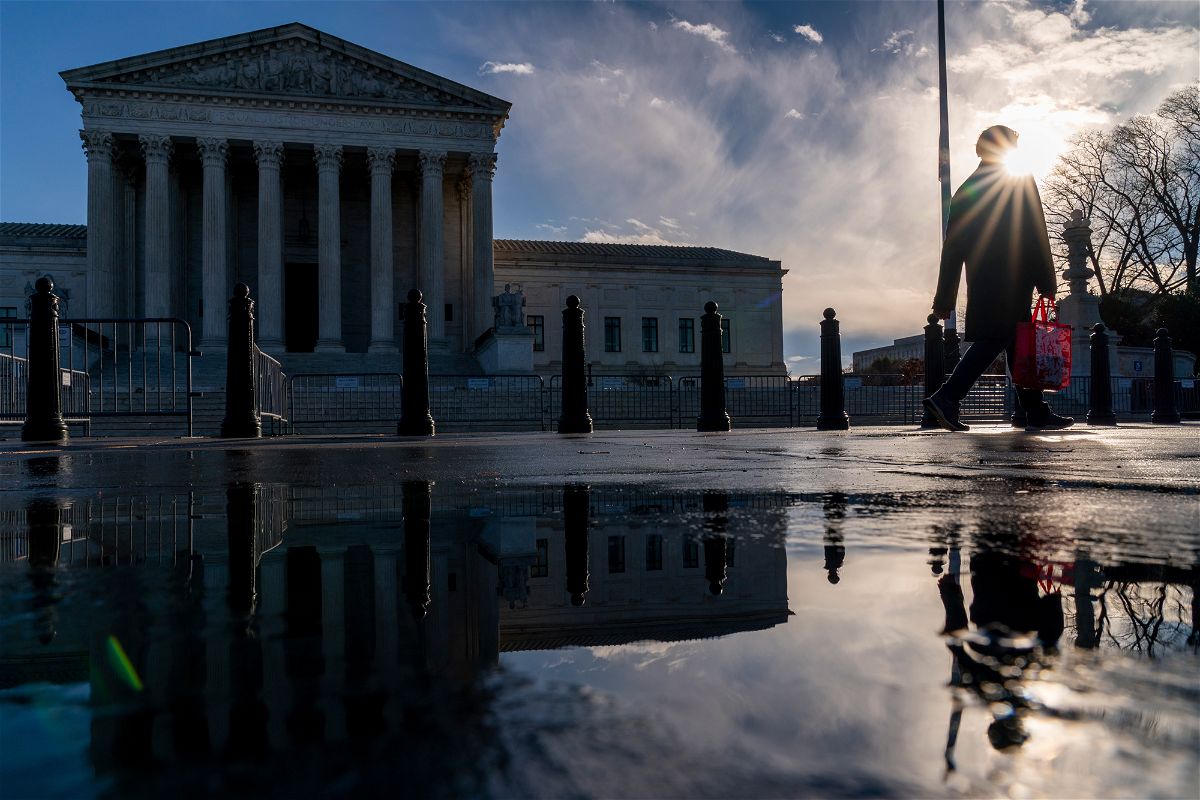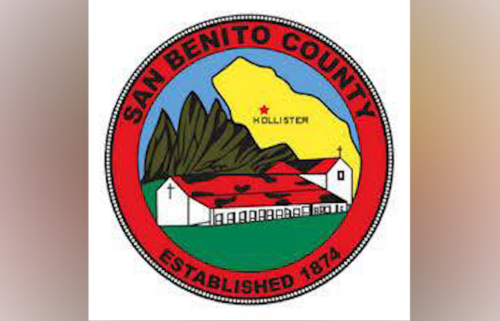The Supreme Court’s student loans case is about more than student loans

When the Supreme Court reconvenes at the end of February
By Ariane de Vogue, CNN Supreme Court Reporter
When the Supreme Court reconvenes at the end of February, it will hear a headline-grabbing case concerning President Joe Biden’s student loan forgiveness program that will affect the finances of millions of Americans.
Critics, including the Republican-led states that have sued, say the initiative amounts to an unlawful attempt to erase an estimated $430 billion of federal student-loan debt under the guise of the pandemic.
But the legal impact could go well beyond the fate of the program.
While most of the attention so far is focused on whether the Department of Education exceeded its authority in implementing the program, some court watchers are focused on an equally important procedural issue that is a major part of the case: whether the red states behind the challenge have the legal right, or “standing” to bring the dispute in the first place.
The concept of standing is one that requires a party to establish an actual or imminent injury to get into court. Simply disagreeing with a policy is not enough. In recent years, states from one party have felt increasingly emboldened to come to court to sue an administration from a different party over a controversial policy. For the Biden administration, the issue is of critical importance now, especially as Republican-led states feel they have an advantage with the court’s 6-3 conservative majority.
“If the courts allow that kind of loose standing, then it opens the door for lots of people and states and others to sue for other people’s injuries and not their own and that would transform the role of federal courts,” Professor Samuel Bray of Notre Dame Law School said in an interview. He says it’s a problem for both Democratic and Republican administrations and he worries about states using the judicial branch to bring federal policymaking to a standstill.
“Courts would be overreaching, and it would shift a court from a judicial role — where it decides a specific dispute — to something more like a legislative role where it decides a question or an issue without a factual dispute between the parties,” he said.
The student loan case involves a handful of GOP states challenging Biden’s plan. Another case this term concerns a challenge from two red states to Biden’s immigration priorities. But it’s not always the red states involved in such disputes. During the Trump administration, for example, Washington state successfully blocked President Donald Trump’s first executive order barring travel from seven Muslim-majority nations.
The threshold issue may seem like dry legalese, but it is of vital importance. How the court decides the case could have profound implications and transform the role of the federal judiciary going forward.
Judges are meant to decide concrete disputes between parties, the thinking goes, and they should not engage in political or policy debates better left to the other branches of government.
Jonathan S. Adler, a professor at the Case Western Reserve University School of Law thinks that the state of Missouri has standing to challenge the loan forgiveness program.
“It only takes one plaintiff to establish standing for the case, so if one state can show enough harm, that should be good enough for the court,” he said in an interview.
The Biden administration has complained that states are going too far with court challenges.
“Federal courts should not now be transformed into open forums for each and every policy dispute between the states and the national government,” Solicitor General Elizabeth Prelogar said during oral arguments on immigration last fall.
Her arguments sparked the attention of Justice Elena Kagan, one of the court’s three liberals.
Kagan said that the issue of standing ultimately affects states of both political stripes that challenge programs put forward by the executive branch. She flagged that lower court judges are increasingly issuing nationwide injunctions halting such programs, repeatedly dragging the justices into the disputes, even if a state can only show what Kagan called a “dollar’s worth” of costs.
“We’re just going to be in a situation where every administration is confronted by suits by states that can, you know, bring a policy to a dead halt” Kagan told Texas’ attorney general.
What it means for the student loan forgiveness plan
On February 28, the justices will hear Biden v. Nebraska, a challenge to Biden’s student loan forgiveness plan. Biden’s initiative offers up to $20,000 of debt relief to millions of qualified borrowers, but it has been blocked by the lower courts. The government says the plan is vital in order to provide targeted debt relief to certain federal student-loan borrowers affected by the pandemic.
The case at hand is brought by a lawyer representing six red states — Nebraska, Missouri, Arkansas, Iowa, Kansas and South Carolina. The states say that the Department of Education did not have the legal authority to issue such a cancellation. They argue that it violates the separation of powers and that Biden is using the pandemic as a pretext to mask his true goal of fulfilling a campaign promise to erase student-loan debt.
They put forward several theories that they say allow them to get into court to challenge a program they argue unlawfully invokes Covid “to assert power beyond anything Congress could have conceived.”
A district court dismissed the challenge holding that the states lack the necessary standing to bring the case. In November, however, the 8th US Circuit Court of Appeals reversed and issued a nationwide injunction blocking the program pending appeal. The court emphasized that one of the states had standing and that was all that was needed to bring the case.
Now, the Biden administration and others are asking the Supreme Court to step in and say that the appeals court got it wrong.
In court papers filed in the case in January, Prelogar warned that if the court were to say “incidental effects on state finances” are enough to establish “standing” then “every State would have standing to challenge almost any federal policy.”
She received support in a friend-of-the-court-brief filed by Bray and William Baude of the University of Chicago School of Law, who say that Article III of the Constitution makes clear that the federal judiciary is only permitted to hear true “cases” or “controversies.”
Over the years, the Supreme Court has defined cases and controversies as disputes where the parties are on opposite sides on an issue that is concrete, and not hypothetical.
Chief Justice Charles Evans Hughes, for instance, explained in 1937 that a controversy must be “one that is appropriate for judicial determination” and “distinguished from a difference or dispute of a hypothetical character or abstract characters; from one that is academic or moot.”
In their brief, Bray and Baude note that the states in the case at hand obtained an “exceedingly broad remedy with an unusually weak basis for standing.”
The appeals court focused on one of the states behind the challenge, Missouri, and pointed to a state created entity called Missouri Higher Education Loan Authority (MOHELA) that has contracted with the federal Department of Education to service student loans. The court said that because Mohela will stop receiving servicing fees for loans discharged under the new plan, Mohela won’t be able to fulfill its obligation to contribute a specified amount of money to the state treasury.
The appeals court said Mohela is akin to a state entity and therefore said that it satisfied the standing requirement.
But Bray and Baude argue that Missouri needs to assert its own injuries, not those of a separate entity. They note that Mohela was established with financial and legal independence from the state of Missouri and the vast amount of its funds are segregated from state funds. They said that for the purpose of bringing suit, Mohela cannot be considered an “arm of the state.”
Shift began with climate change
A shift in the state standing doctrine came in 2007 when the Supreme Court issued an opinion in a case called Massachusetts v. EPA. In that case, the court said that Massachusetts had standing to challenge the George W. Bush administration’s inaction on climate change.
The court ultimately ruled that the commonwealth was entitled to “special solicitude” to bring the case which resulted in greenhouse gases being regulated as air pollutants under the Clean Air Act.
“Mass v. EPA sent a message to lower courts to be more accommodating to state standing claims and lower courts got the message,” Adler said.
Chief Justice John Roberts, penned a strenuous dissent, joined by the late Justice Antonin Scalia, Clarence Thomas and Samuel Alito. Roberts condemned the majority opinion and said that “special solicitude” would make “standing seem a lawyer’s game, rather than a fundamental limitation ensuring that courts function as courts and not intrude on the politically accountable branches.”
The trio are now joined by three other conservative members who now may move to overturn or limit the decision. Some wonder if the conservative appointees might work to distinguish the current standing arguments from that 16-year-old opinion.
Baude and Bray say the concerns put forward by Roberts in 2007 have “proved prophetic” and in the years since the opinion, lawsuits brought by state attorneys general challenging actions by the federal government have “skyrocketed” with states making extravagant standing arguments.
“Unless this Court wishes to sit in constant judgment of every major executive action — which is not its constitutional role — it is time to stay ‘stop’,” the law professors argued.
The-CNN-Wire
™ & © 2023 Cable News Network, Inc., a Warner Bros. Discovery Company. All rights reserved.


